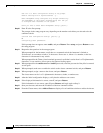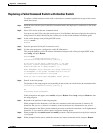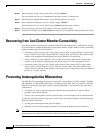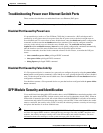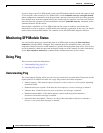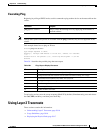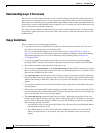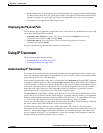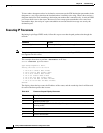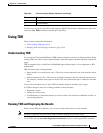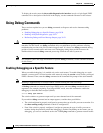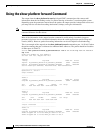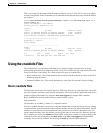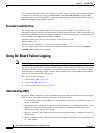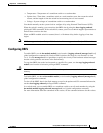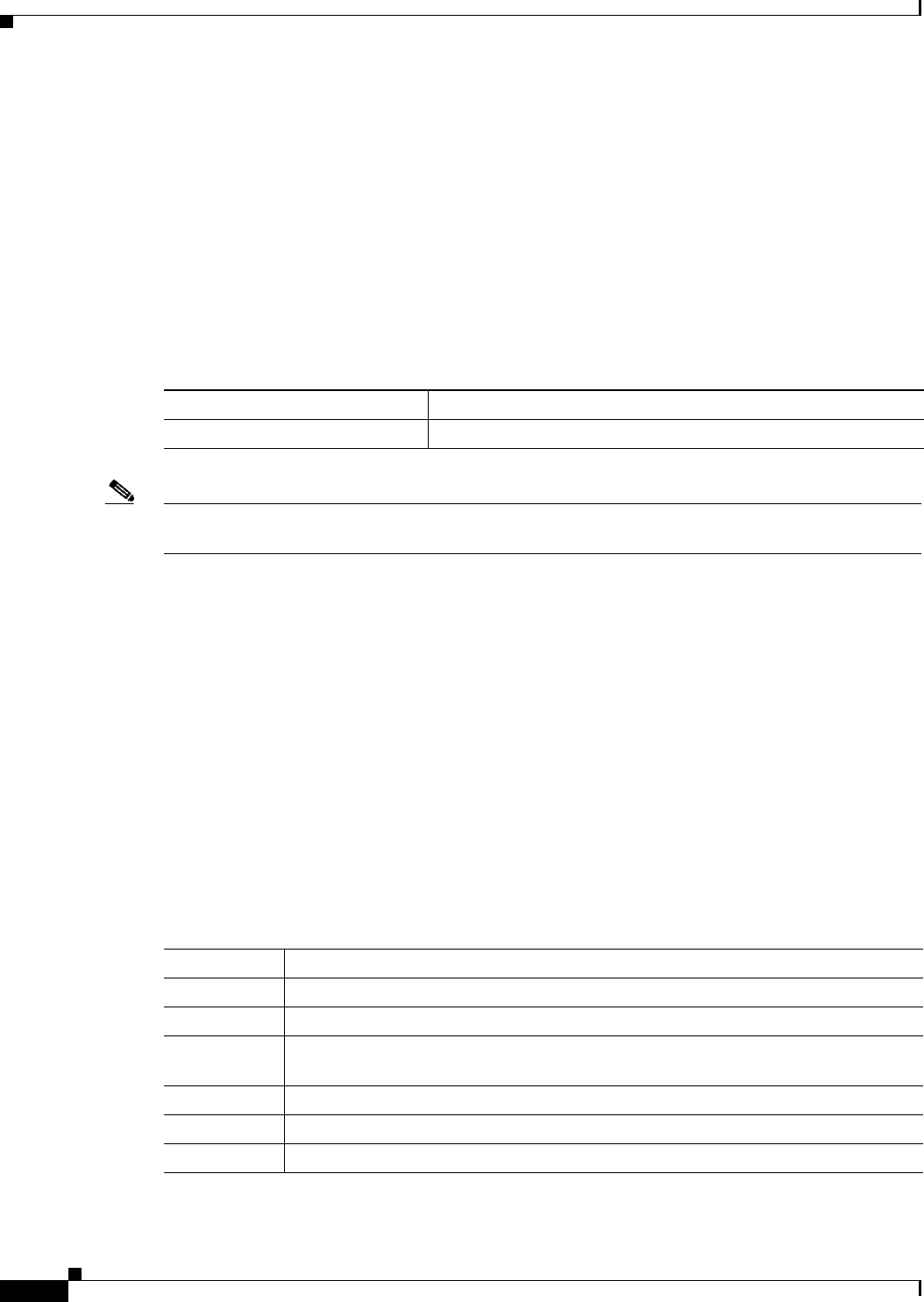
38-18
Catalyst 2960 and 2960-S Switch Software Configuration Guide
OL-8603-09
Chapter 38 Troubleshooting
Using IP Traceroute
To learn when a datagram reaches its destination, traceroute sets the UDP destination port number in the
datagram to a very large value that the destination host is unlikely to be using. When a host receives a
datagram destined to itself containing a destination port number that is unused locally, it sends an ICMP
port-unreachable error to the source. Because all errors except port-unreachable errors come from
intermediate hops, the receipt of a port-unreachable error means that this message was sent by the
destination port.
Executing IP Traceroute
Beginning in privileged EXEC mode, follow this step to trace that the path packets take through the
network:
Note Though other protocol keywords are available with the traceroute privileged EXEC command, they are
not supported in this release.
This example shows how to perform a traceroute to an IP host:
Switch# traceroute ip 171.9.15.10
Type escape sequence to abort.
Tracing the route to 171.69.115.10
1 172.2.52.1 0 msec 0 msec 4 msec
2 172.2.1.203 12 msec 8 msec 0 msec
3 171.9.16.6 4 msec 0 msec 0 msec
4 171.9.4.5 0 msec 4 msec 0 msec
5 171.9.121.34 0 msec 4 msec 4 msec
6 171.9.15.9 120 msec 132 msec 128 msec
7 171.9.15.10 132 msec 128 msec 128 msec
Switch#
The display shows the hop count, the IP address of the router, and the round-trip time in milliseconds
for each of the three probes that are sent.
Command Purpose
traceroute ip host Trace the path that packets take through the network.
Table 38-2 Traceroute Output Display Characters
Character Description
* The probe timed out.
? Unknown packet type.
A Administratively unreachable. Usually, this output means that an access list is
blocking traffic.
H Host unreachable.
N Network unreachable.
P Protocol unreachable.



